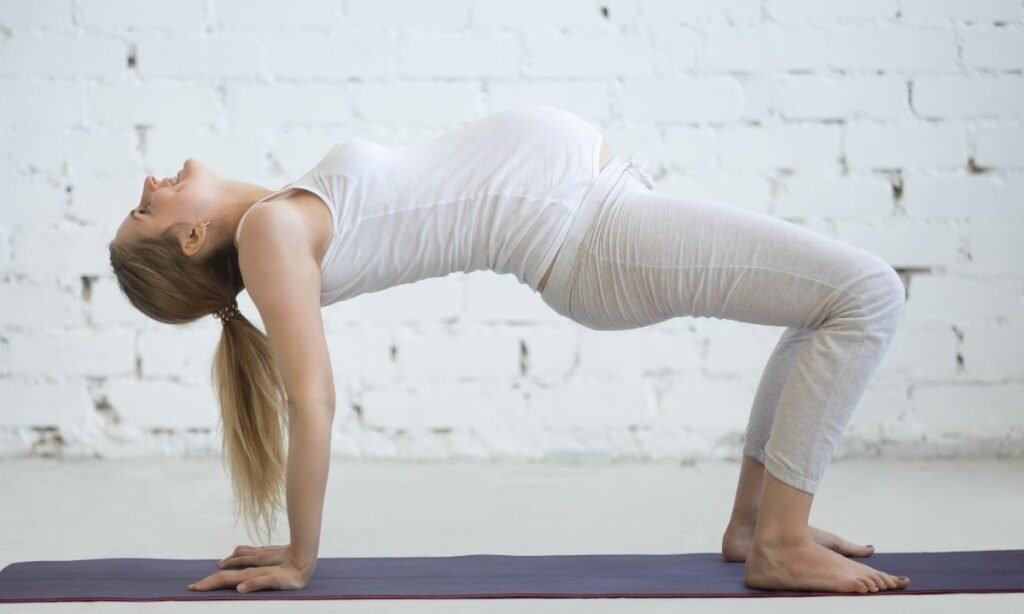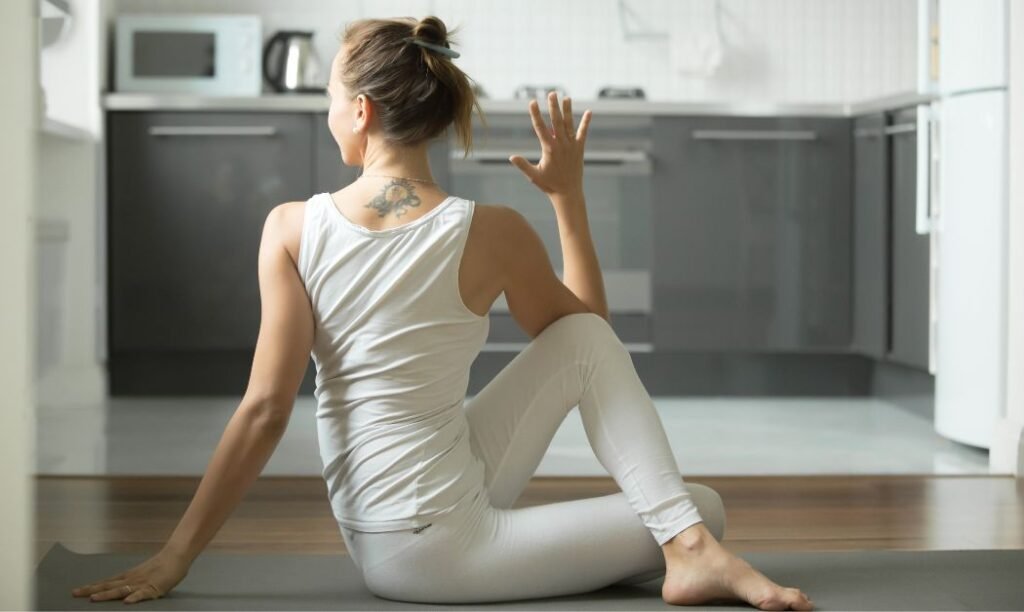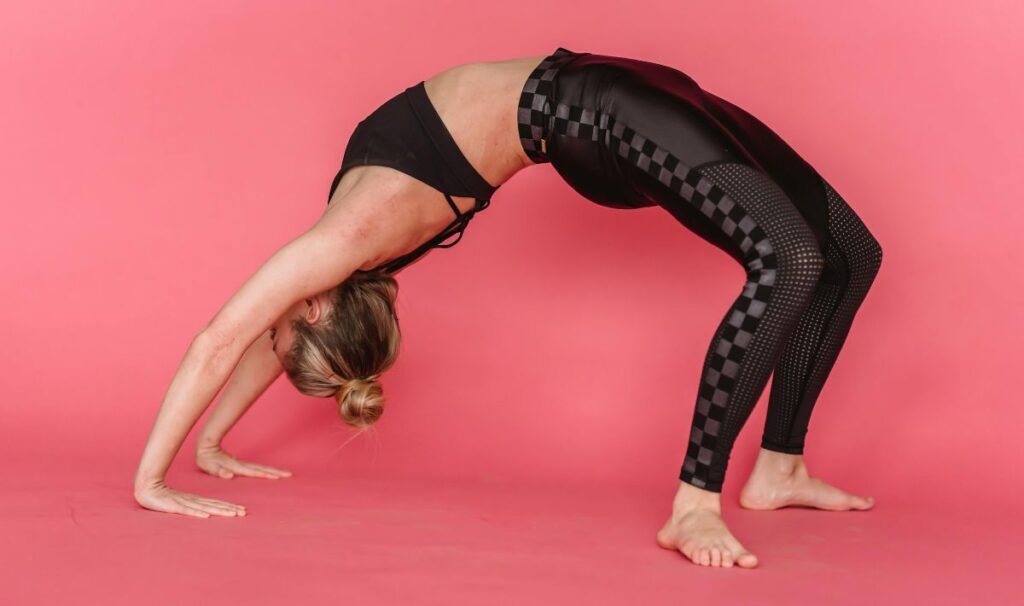Yoga has long been celebrated for its ability to promote physical health, mental clarity, and emotional balance. Among the many poses that combine strength and stretch, Ardha Purvottanasana, or the Reverse Tabletop Pose, stands out as a foundational yet powerful asana. Whether you’re new to yoga or a seasoned practitioner, this pose can bring balance and vigor to your practice.
In this post, we’ll dive deep into how to do Ardha Purvottanasana, its incredible benefits, and creative modifications to suit all body types and experience levels. Get ready to build strength, improve posture, and feel rejuvenated!
What is Ardha Purvottanasana (Reverse Tabletop Pose)?
Ardha Purvottanasana is a Sanskrit term where:
- Ardha means “half”
- Purva refers to the “east” or “front of the body”
- Uttana translates to “intense stretch”
- This pose is named for its intense stretch across the chest and front body while resembling the shape of a tabletop when performed correctly.
In simpler terms, the Reverse Tabletop Pose requires you to lift your body using your arms and legs while your torso forms a flat “table-like” structure. It’s a dynamic pose that strengthens your shoulders, arms, core, and glutes while opening your chest and stretching your wrists.
Step-by-Step Guide to Perform Ardha Purvottanasana
- Start with Dandasana (Staff Pose)
- Sit on your yoga mat with your legs extended straight out in front of you.
- Keep your spine tall and your palms resting on the ground beside your hips, fingers pointing forward.
- Bend Your Knees
- Bring your feet flat on the mat, hip-width apart. Your knees should point up to the ceiling.
- Place Your Hands
- Position your hands slightly behind your hips, shoulder-width apart. Ensure your fingers face forward for better alignment.
- Engage Your Core
- Activate your abdominal muscles to stabilize your spine and prepare for the lift.
- Lift Your Hips
- Press through your palms and feet as you lift your hips toward the ceiling.
- Your knees, hips, and shoulders should form a straight line, creating the “tabletop” shape.
- Align Your Head and Neck
- Gaze straight ahead or let your head gently tilt back, ensuring there’s no strain on your neck.
- Hold the Pose
- Breathe deeply and hold the position for 3-5 breaths (or longer, if comfortable).
- Lower Down Gently
- Slowly bring your hips back to the mat, returning to Dandasana.
Readmore: 7 Yoga Poses to Boost Self-Confidence & Power
Readmore: How Yoga Can Help Improve Your Posture
Mistakes to Avoid
1 . Slouching Shoulders
Keep your chest lifted and shoulders pulled back to avoid collapsing into your shoulders.
2. Improper Hand Position
Your fingers should point forward. If this is uncomfortable, adjust slightly but avoid pointing your hands backward as it may strain your wrists.
3. Sinking Hips
Engage your glutes to lift your hips high. A sagging tabletop defeats the purpose of the pose.
4. Overarching the Neck
While letting your head hang back is an option, do it only if your neck feels supported. Otherwise, keep your gaze neutral.
Benefits of Ardha Purvottanasana
Practicing the Reverse Tabletop Pose regularly can transform your body and mind in the following ways:
1 . Strengthens the Upper Body
This pose engages your shoulders, triceps, and chest, making it an excellent way to build upper-body strength.
2. Opens the Chest and Shoulders
Sitting for long periods can round your shoulders and close off your chest. This pose counteracts those effects by opening up the front body.
3. Improves Posture
By strengthening your back and engaging your core, this pose encourages better alignment in your daily life.
4. Enhances Core Stability
Holding your body in this lifted position activates your abdominal muscles, improving core strength and stability.
5. Stretches the Wrists and Forearms
If you work on a computer or phone for hours, this pose is a great way to stretch and relieve tension in your wrists and forearms.
6. Boosts Energy Levels
The heart-opening nature of Ardha Purvottanasana promotes better circulation and breath awareness, leaving you feeling refreshed and energized.
Readmore: Winter Wellness: 12 Yoga Poses to Stay Warm
Readmore: The Best Foods for a Yogic Diet
Variations and Modifications
Not everybody feels the same in yoga poses, and that’s okay! Here are some variations and modifications to make the pose more accessible or challenging.
1. Wrist-Friendly Variation
If you experience wrist pain:
- Place yoga blocks under your hands for extra height and support.
- Rotate your hands slightly outward to reduce strain.
2. Modified Reverse Tabletop
If lifting your hips is challenging:
- Keep your hips lower, focusing on engaging your arms and shoulders.
- Gradually build strength over time.
3. Single-Leg Reverse Tabletop
To add a challenge:
- Extend one leg straight out while holding the pose.
- Alternate legs after a few breaths.
4. Dynamic Reverse Tabletop
For a dynamic stretch:
- Flow in and out of the pose with each breath. Inhale to lift your hips and exhale to lower them.
5. Advanced Reverse Plank (Purvottanasana)
Once you’ve mastered the tabletop position:
- Straighten your legs, keeping your toes pointed, to transition into the Reverse Plank Pose.
Pro Tips for a Safe Practice
- Warm Up First: Prepare your wrists, shoulders, and core with poses like Cat-Cow, Plank, and Cobra.
- Use a Non-Slip Mat: A firm foundation ensures your hands and feet stay steady.
- Listen to Your Body: Skip the pose if it causes pain in your wrists, shoulders, or lower back.
- Breathe Mindfully: Deep, steady breathing helps you hold the pose with ease.
Incorporating Reverse Tabletop Pose into Your Practice
Wondering when and where to include Ardha Purvottanasana? Here are some ideas:
- As a Strength-Building Pose: Add it to the middle of your practice to fire up your arms and core.
- As a Counterpose: Use it after seated forward bends to open up your chest and stretch your wrists.
- In a Flow Sequence: Pair it with poses like Bridge and Wheel for a heart-opening sequence.
Readmore: 5 Amazing Reasons to Try Hot Yoga
Readmore: 5 Inspiring Yoga Routines for Nature Lovers
Final Thoughts
Ardha Purvottanasana, or the Reverse Tabletop Pose, is much more than a simple lift. It’s a blend of strength, stretch, and mindfulness that benefits your body and mind. Whether you’re a beginner looking for a foundational pose or an advanced yogi exploring variations, this pose has something for everyone.
So, roll out your mat, give it a try, and let the magic of Reverse Tabletop rejuvenate your practice. And remember, yoga isn’t about perfection—it’s about showing up for yourself and embracing the journey.

Sonu is a passionate yoga teacher with over 6+ years of experience helping individuals find balance, strength, and inner peace through the transformative power of yoga. As the creator of Pure Yoga Vibes, Sonu shares expert insights, inspiring practices, and a wealth of knowledge to support your wellness journey. Dedicated to creating a space for growth and mindfulness, Sonu’s mission is to make yoga accessible and enjoyable for everyone. For inquiries or collaborations, feel free to reach out at contact@pureyogavibes.com.



